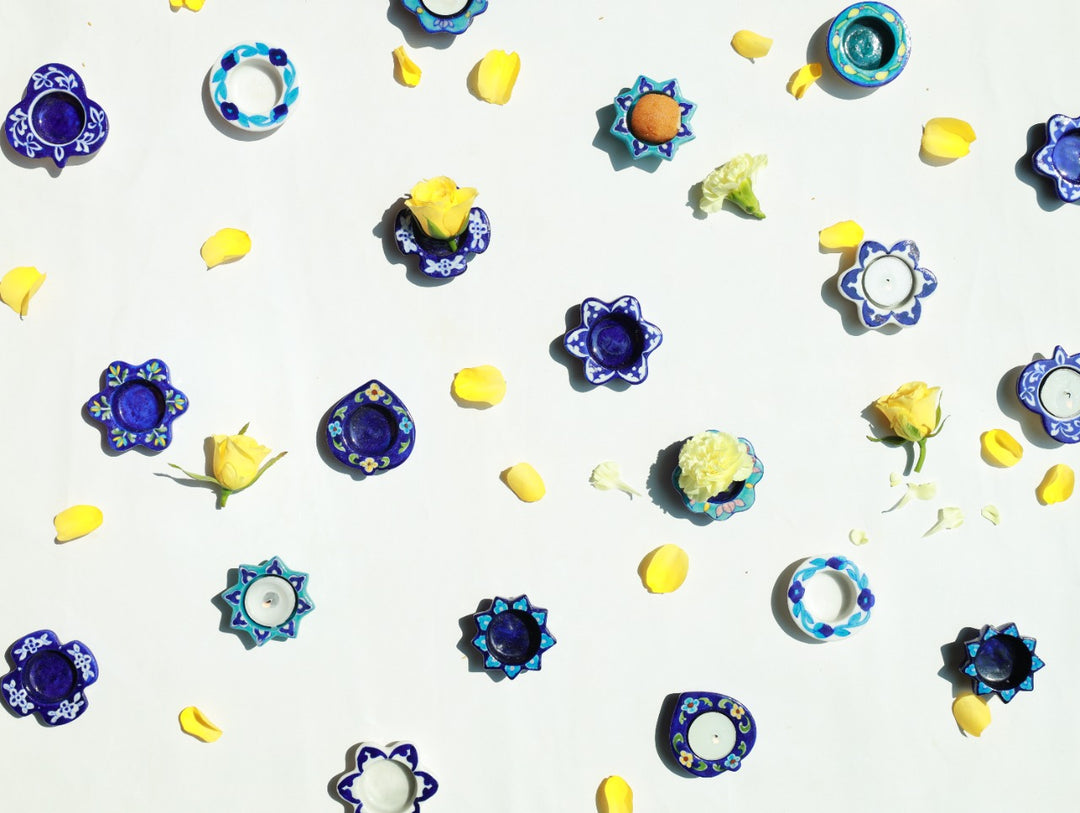Jalebi – The Sugary and Spirally Delight
Yashi Srivastava
July 28, 2020

The mornings started earlier here. By 7 in the morning a round of tea and biscuits was already over and we were onto the next meal. Not a morning person otherwise, in Lucknow by this time I would be springing around waiting for the breakfast. It was a decadent breakfast that was allowed on Sundays and on the day of our arrival in Lucknow, it was the sacred trio of Khasta and Dahi-Jalebi.
My earlier memories of a tiny girl in her frock waiting near the huge Kadhai (cauldron) are rather vivid. I remember three visuals: holding my grandfather’s little finger, the halwai (confectioner/cook) who seemed like a magician dipping his hands in the scalding oil (whoever knew about the Leidenfrost Effect) and that of opening a heavy brown paper bag and finding jalebis that were brighter than the evening sun. We would eat a few on the way and sit again with the family to eat with renewed enthusiasm and greed, and sharing side glances with each other smiling at our little secret crime of siphoning the good jalebis. Curd is by far, without argument, the best accompaniment for jalebis. The crisp against the mushy and the saccharine against the tangy made each bite a surprise. No bite would ever taste the same, sometimes it was the curd that overpowered and sometimes it was the jalebi. It was just the breakfast that kept giving.
The word Jalebi and the dish too has been seen as a corruption of a dish that has travelled to India from the middle-east. Yule & Burnell (1903, P. 459), in their ‘Hobson-Jobson: A Glossary of Colloquial Anglo-Indian Words and Phrases, and of Kindred Terms, Etymological, Historical, Geographical and Discursive’ define Jalebi as a corruption of the Arabic term Zulabiya or the Persian word Zobiya. They define Jelaubee as “a rich sweetmeat made of sugar and ghee, with a little flour, melted and trickled into a pan as to form a kind of interlaced work when baked”. Others still argue that the basics of what we eat as Jalebi today have always been a part of the Indian thought and way of life as Kundalika or Jal Vallika. Whatever the case may be, the iconic jalebi has found its lovers scattered throughout time, geography and peoples.
The Simon and Schuster International Pocket Food Guide (1980) by Quentin Crewe recommends Jalebi as a dish not to be missed by the adventurous gourmet in search of new gastronomic experiences. Such is the love of the “deep-fried batter twirls soaked in syrup” (Ibid., p. 129) that it caught the notice of the celebrated Nobel Prize author Pearl S. Buck. In her book ‘Pearl s. Buck’s Oriental Cookbook’ she identifies the cookery of India as “intricate art with its roots in time-honored custom, in centuries of change, in the various nationalities of the inhabitants, in climatic conditions, in individual and national taste – and in religion” (p. 68). This ethos of Indian cookery captured by the author is mirrored by our omnipresent Jalebi in its various forms. It comes as a sweetmeat made of Urad Dal (Jangiri in south of India, and as Imarti in the north). In the east it marries paneer (cottage cheese) and in Central India as the Buhranpuri Jalebi, the variant that I am yet to devour, the Mawa Jalebi delicately dangling on the tongs and its burnt umber colour cheekily invites me.
You will find a plethora of recipes online, but here is a recipe for Jalebi given by Pearl S. Buck which evokes pride, nostalgia and joy in equal parts.

Jalebi comes as a chaos, it comes in patterned flower-like shape. However it comes, it comes to make a permanent fan.
Shop our Imarti cushions
 Yashi Srivastava is a Research Scholar in Sociology at the Department of Humanities and Social Sciences at IIT Kharagpur.
Yashi Srivastava is a Research Scholar in Sociology at the Department of Humanities and Social Sciences at IIT Kharagpur.
Note: Images of the cookbook are taken from Internet Archive an online, open-access repository
Illustrated by Bahaar Jain












Leave a comment